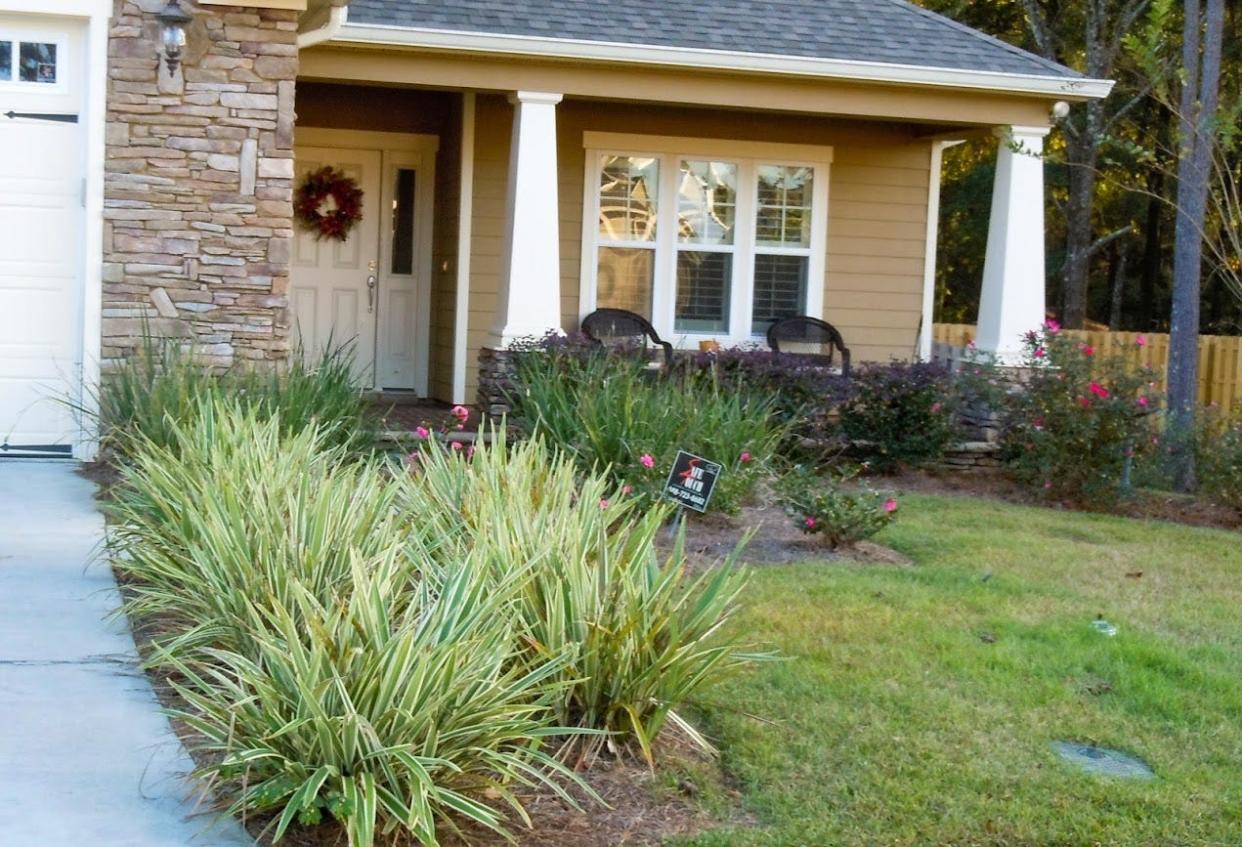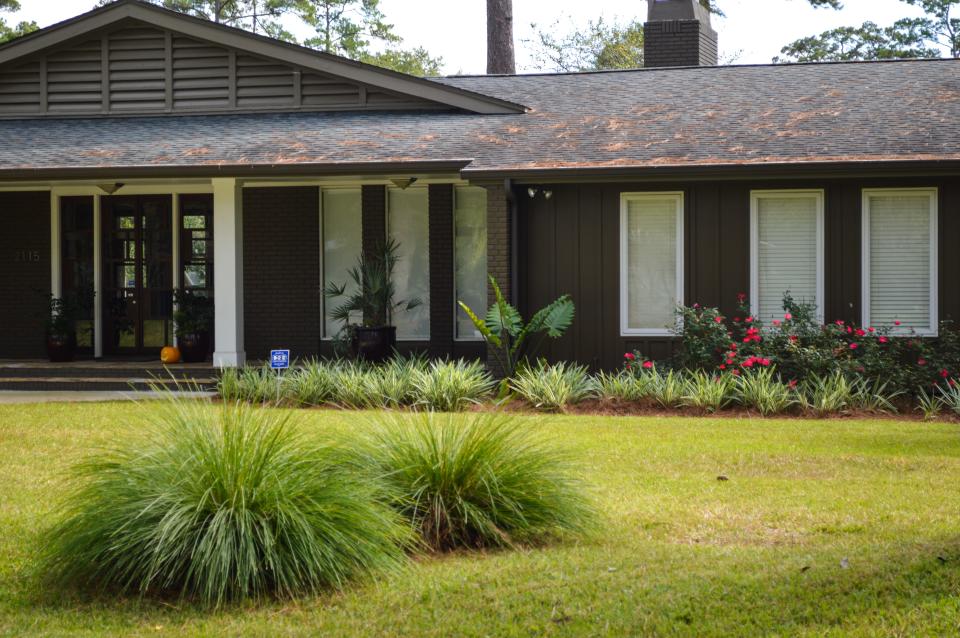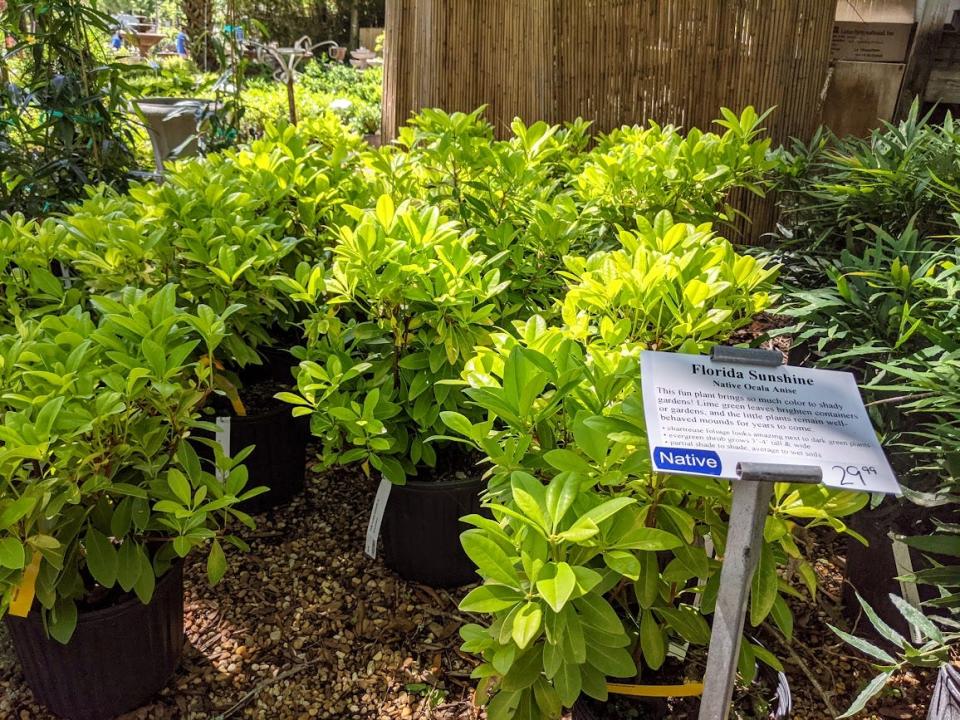Enjoy the flowers: What to do in the garden in May and June

We continue into the season where many of you are making changes and additions in your landscape and garden areas. As you do, take time to research the plants that you’re thinking of using.
One of the most common mistakes we all tend to make in landscaping is forgetting that plants grow, and often much larger than we had predicted. The consequence is that some years later we end up with an overgrown jungle that may be blocking our view from windows inside the house and hiding too much of the house outside.
Things to do in Tallahassee: Diverse artistry shines, from Soul Fest to Indigenous rockers
Breweries: Tallahassee breweries gathering to support Tomato Feastival fun | Around the Brew Bend
Sometimes we can deal with overgrown plants through judicious pruning. But if the mature size of the plant is much larger than the site, it’s an unwinnable battle. It’s best to remove the plant and replace it with a more suitable planting.
This is a good time of year for that. The nurseries are well stocked, and you still have most of the growing season ahead.

How big will it grow?
When shopping for plants, never forget to consider the projected size of a plant as it matures. The nursery signs should give you that information and you can also find the information with a bit of research on the internet if you know the name of the plant and its cultivar name.
In most cases you don’t want to use plants in front of windows that will require a lot of pruning.
Fortunately, in recent years growers have released more shrubs that tend to be slower and lower growing. For example, in a recent walk through the nursery I noted several attractive shrubs that were projected to grow no taller than about three to four feet: ‘Touch of Gold’ holly, ‘Cerise Charm’ loropetalum, ‘Florida Sunshine’ Ocala anise, and two cultivars of Distylium, ‘Cinnamon Girl’ and ‘Swing Low’.
Spreading or prostrate Japanese plum yew, Cephalotaxus harringtonia ‘Prostrata’, is another commonly used shrub that is easily maintained at a low height. And, remember, all your foundation plants don’t have to be woody shrubs. Plants such as giant liriope, Lomandra, Dianella (flax lily), Crinum, and Agapanthus (Lily of the Nile) work well too.
How deep to dig hole?
As you plant your new plants, be sure to dig the planting holes two to three times wider than the root ball. Don’t plant any deeper than the plant was growing in the pot. You don’t need to fertilize the plants until they’ve been growing for a while.
Mulch and water
But you will need to water them, focusing on the root balls, at least every other day when it’s not raining. The only sure way to tell if a plant is receiving enough water is to stick your finger down an inch or so into the soil of the root ball and see if it’s moist.
Periodically do this check, especially if you’re relying on a sprinkler system, because you may find that the roots really aren’t receiving enough water. Maintaining a two to three inch layer of pine straw mulch around the plants will help conserve the moisture longer, protect the roots from excessive summer heat, and keep weeds from sprouting so easily.

Pruning
You may have pruned your older landscape plants earlier in the spring. But, if needed, continue light pruning on into summer to reduce size, increase compactness, or to just generally shape plants as desired.
Mowing
Mow your lawn regularly and take time to periodically remove and sharpen mower blades. It’s best to have your own sharpener at home so you can do this often. But if you don’t, there are equipment and repair shops which can do the sharpening for you. A dull blade gives a ragged cut.
Don’t forget to perform other maintenance service on your mower such as changing oil and changing air filter and greasing fittings. As you mow, be careful about not mowing too low and putting additional stress on the grass, particularly in areas where the grass may already be under stress, such as in shaded areas or areas of high traffic.
If you do have problem areas in the lawn, this is an excellent time to buy grass plugs or pieces of sod to fill in areas of the lawn. If it’s an area that you continually replant, be realistic about whether there’s really enough sunlight for grass to grow well.
Fertilizing
This spring has been somewhat cool, so if you’re like me and still haven’t fertilized the lawn yet, take time to do it now. A good general purpose fertilizer for our area is 15-0-15 or similar no-phosphorus fertilizer which has half of its nitrogen in a slow-release form.
This same fertilizer can also be used as needed on shrubs, trees, and even in the vegetable garden unless you’ve had a soil test showing a need for additional phosphorus. Of course, if you choose to use a combination fertilizer/weed-killer on the lawn, don’t use it around your other plants as the herbicide will damage them.
Fighting fire ants
Another task you may have delayed because of the cool spring is broadcasting fire ant bait over your landscape. If you broadcast fire ant bait now, you will obtain almost complete prevention of new fire ant mounds in your yard until the fall, when you will need to broadcast it again.
Be sure to follow label directions carefully. The rate applied is very low and you don’t want to needlessly apply more than needed. You will need a small, inexpensive hand spreader, not a lawn fertilizer spreader, to apply the low volume of bait required.
Summer color
We’re rapidly approaching summer, so as you plant for color now, it’s best to select plants that will thrive through the summer heat. Some smaller, more compact colorful plants for sunny areas are torenia, Sunpatiens, Melampodium, vinca, narrow-leaf zinnia, coleus, croton, and pentas.
If you have plenty of room in sunny areas for some larger perennials, firebush, firecracker plant, and Turk’s cap are excellent choices for attracting hummingbirds. If you can find them locally, the small-flowering heliconias are also strong hummingbird attractants as is also the common bronze shrimp plant.
Plumbago is a good perennial for masses of blue flowers. For moderately shaded areas variegated shell ginger, caladiums, and coleus can add a lot of color with their foliage.
Hydrangeas will be flowering soon and are a good shrub choice for areas of your landscape that receive some afternoon shade. The burgundy-leafed, lower-growing loropetalums such as ‘ Purple Diamond’, ‘Crimson Fire’, and the aforementioned ‘Cerise Charm’ are colorful shrubs for sunny areas.
Crape myrtle and citrus
Crape myrtle flowering season is just around the corner, too. If you’re selecting new ones to plant, consider the mature height and spread of the plant and make sure you select a variety that won’t outgrow the site. You shouldn’t have to prune a crape myrtle to keep it at the desired height. There are shrub-sized and patio-sized crape myrtles if that’s what you need. The garden center personnel should be able to help you find the appropriate variety if you tell them your needs.
This is the best time to plant citrus, so that they have a long growing season to establish before next winter. Fertilize them every four to six weeks with a special citrus fertilizer that contains micronutrients. Blueberries, figs, and blackberries ripen in late spring to summer and can also be planted now.
Veggies
Fertilize vegetable plants that you planted in March or April. You can also still plant heat-tolerant vegetables such as okra, eggplant, peppers, Lima beans, southern peas, and sweet potatoes, as well as herbs such as basil, fennel, and rosemary.
David W. Marshall is a landscape consultant with Tallahassee Nurseries and an Extension Agent Emeritus with UF/IFAS Extension Leon County, an Equal Opportunity Institution. For gardening questions, email the extension office at AskAMasterGardener@ifas.ufl.edu.
Never miss a story: Subscribe to the Tallahassee Democrat using the link at the top of the page.
This article originally appeared on Tallahassee Democrat: Enjoy the flowers: What to do in the garden in May and June

